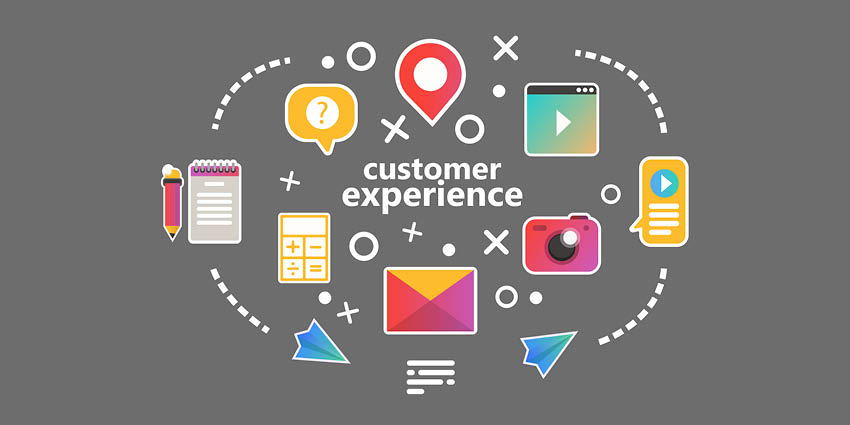According to a 2021 Forrester study, businesses that define themselves as “experience driven” enjoy 1.7x higher revenue growth than those that do not.
Yet, what does it mean to be “experience driven”? At its simplest, these businesses have implemented formal CX management processes in which they assess customer effort, sentiment, and/or satisfaction at various stages of the customer journey. After doing so, they pinpoint and prioritize CX improvement opportunities. Then, the company can design and build a better customer experience.
While some may choose to design a new journey from scratch, most companies will likely have an experience that they are ready to upgrade. If this is the case, consider the following five-step approach.
The Five Stages of CX Design
Here are five steps to keep in mind when designing an enhanced customer experience.
1. Develop a Customer Journey Framework
Experience the existing customer journey and note every customer touchpoint from the initial browsing experience to the moment the journey ends, perhaps with a review, delivery, or – in a brick and mortar store – the customer walking out the door.
Consider the little moments that may significantly impact customer sentiment and create a step-by-step journey framework of potentially 20-40 customer touchpoints.
2. Uncover How Customers Feel About the Existing Journey
Engage in mystery shopping, voice of the customer research, and business diagnostics to understand the emotions a customer feels along their journey. Also, look out for significant pain points and memorable moments that are perhaps crucial to customer loyalty.
Gathering a combination of qualitative and quantitative feedback, filter this down to isolate crucial customer expectations. Then, substantiate them by investigating how they impact critical CX metrics across the customer journey. These may include customer effort, sentiment, or satisfaction.
By doing so, CX teams can visualize moments of truth, where they can significantly enhance CX by removing frictions or adding value to particular touchpoints.
3. Create a Series of Promises and Commitments
Customer experience design allows companies to reposition their brand. As such, CX teams should work with various functions to identify brand values, creating a set of brand promises and commitments.
By walking back through the journey and considering whether these commitments are being met, CX teams can highlight conflicts within the customer experience. These then become opportunities to deliver a more consistent experience.
4. Design the Future Journey
Plot out the new customer journey using a tool like Excel, where designers can build a narrative that states how the company aims to meet emotional and functional needs at every touchpoint.
Then, maybe bring in a visual that highlights the new framework. These individual touchpoints are perhaps the same as the original, but creating a visual picture is helpful when adding proactive rules to streamline the customer journey.
5. Begin the Transformation Process
To achieve the ideal future journey, companies can prioritize the improvement opportunities to close the gap with the existing customer experience.
Yet, such re-engineering may include streamlining “backstage” business processes while transforming product, service, and channel considerations – each contextualized by customer promises and commitments.
Key Benefits of Customer Experience Design
Irrespective of business size, many companies choose to invest in CX design to differentiate their proposition.
Such a strategy often bears fruit, with 65 percent of US-based customers finding a positive brand experience more influential than an advertising campaign to recruit new customers, as per a PwC study.
Alongside this, here are some additional benefits of a well-orchestrated customer journey.
- Higher Sales – Excellent CX translates into more frequent purchases as superior CX makes customers feel valued. In turn, they respond by spending more time interacting with the business, be it in terms of exploring new products or considering add-on services.
- Earn Brand Advocates – Top-notch customer experiences lead to customers advocating the brand amongst friends and families through word-of-mouth and social media.
- Win Customer Trust and Retention – Retaining customers in a digital-first reality is tricky. However, CX design makes a difference, allowing businesses to maximize the human face behind the brand and develop genuine connections.
Critical Mistakes to Avoid for an Effective CX
Expecting technology to solve every issue is a common trap to fall into. Business processes, employee workflows, and culture are critical considerations in designing CX strategies that companies can successfully implement.
Also, remember to continually test, learn, and optimize new customer journeys before going live with the implementation. After all, even the most sophisticated and comprehensive CX design methodologies need reworking. Harnessing low-code tools is helpful here, accelerating a cumbersome process.
Finally, create accountability in terms of who improves particular touchpoints, ensuring that everyone delivers on the desired outcome, alongside those critical customer promises and commitments. Ensuring these departments feel part of the initial design process is pivotal for ensuring success here.
Remember, a successful CX design and implementation project requires a village.
Find out how to sidestep other CX challenges by reading our article: 5 Customer Experience Challenges to Overcome Before 2025







